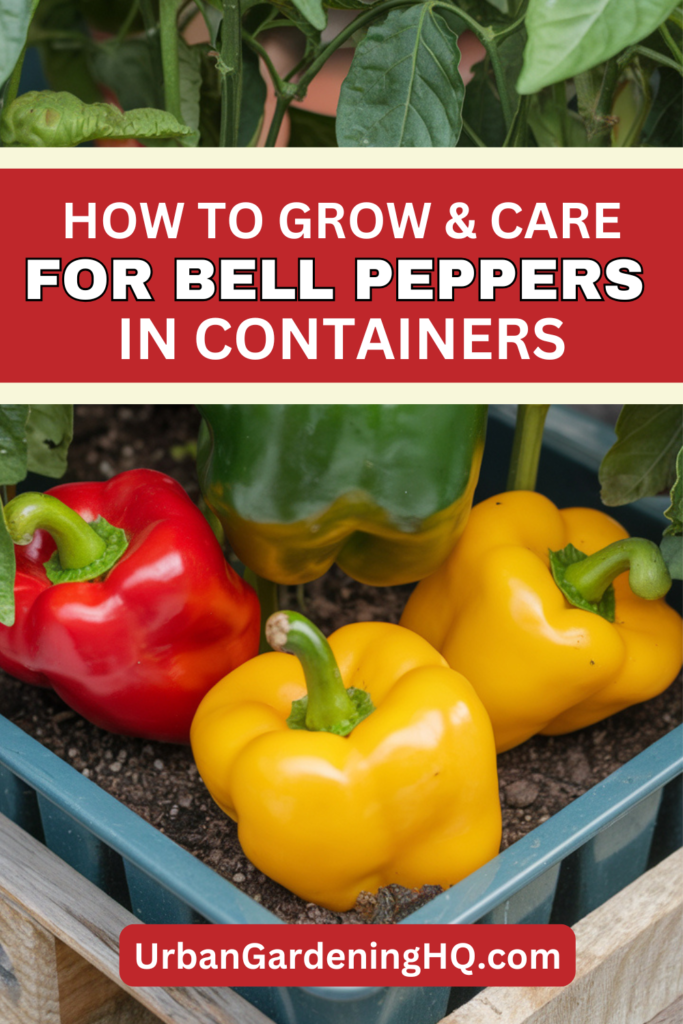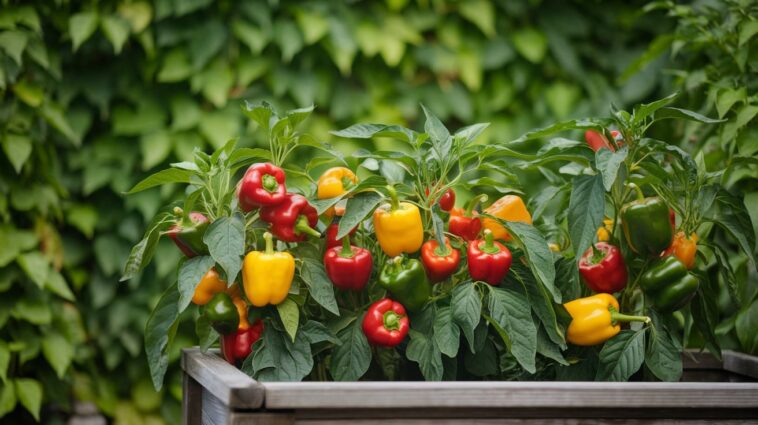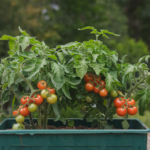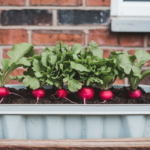Bell peppers are one of my favorite vegetables to grow in containers. They’re colorful, crisp, and packed with flavor, making them perfect for fresh salads, stir-fries, and roasting. Growing them in containers is ideal for small spaces, and with the right care, they can be incredibly productive. Here’s how I successfully grow bell peppers in pots.
Choosing the Right Container
Bell peppers have a fairly deep root system, so I always choose a container that is at least 12 inches deep and 12-14 inches wide. A larger container helps retain moisture and gives the roots plenty of space to grow. I prefer using ceramic, plastic, or fabric grow bags with good drainage holes to prevent waterlogging.
If I’m planting multiple pepper plants, I space them at least 12-18 inches apart in separate pots to allow for proper airflow and avoid overcrowding, which can lead to disease. I also make sure the container is sturdy, as bell pepper plants can become top-heavy when loaded with fruit.

Picking the Best Bell Pepper Variety
Not all bell peppers are the same, and some varieties are better suited for container gardening. Here are my go-to choices:
- ‘California Wonder’ – A classic variety that produces large, sweet peppers.
- ‘Mini Belle’ – A smaller variety that thrives in compact spaces.
- ‘Purple Beauty’ – A unique purple bell pepper with a sweet taste.
- ‘King Arthur’ – Known for its high yields and resistance to diseases.
- ‘Gypsy’ – A reliable variety that matures quickly and is great for pots.
- ‘Sweet Banana’ – A mild and productive pepper variety perfect for containers.
- ‘Big Red’ – Produces large, juicy red peppers with a delicious crunch.
Preparing the Soil
Bell peppers thrive in light, well-draining soil that retains moisture but doesn’t become soggy. I use a high-quality potting mix enriched with compost or worm castings for added nutrients. To improve aeration and drainage, I mix in perlite or coconut coir.
Before planting, I also add a balanced organic fertilizer with equal parts nitrogen, phosphorus, and potassium to promote healthy growth. A slow-release fertilizer helps maintain nutrient levels over time.
Planting Bell Peppers
I either start bell peppers from seed indoors about 8-10 weeks before the last frost or purchase seedlings from a nursery. When transplanting, I make sure the soil temperature is at least 65°F since peppers don’t tolerate cold soil.
I plant each seedling at the same depth as they were in their original container to avoid burying the stem too deeply. Right after planting, I water thoroughly to help the roots establish. To encourage a bushier plant, I sometimes pinch off the top set of leaves when the plant is about 6 inches tall.
Sunlight and Temperature Needs
Bell peppers love warmth and sunshine, so I place my containers in a spot that gets at least 6-8 hours of direct sunlight per day. If temperatures drop below 55°F at night, I move the containers indoors or cover the plants with a light cloth to keep them warm.
During extremely hot days (above 85°F), I provide some afternoon shade to prevent stress and sunscald on the peppers. A shade cloth or positioning the plants near taller crops helps regulate temperature.
Watering and Mulching
Consistent moisture is key for growing bell peppers. I water deeply every 2-3 days, making sure the soil stays evenly moist but not soggy. During hot weather, I check the soil daily and water as needed.
To help retain moisture and regulate soil temperature, I apply a layer of mulch using straw, shredded leaves, or grass clippings around the base of the plant. This also helps prevent weeds from competing with my peppers.
Supporting Pepper Plants
Although bell peppers aren’t as vining as tomatoes, their branches can get heavy once the fruits develop. I use small stakes, cages, or trellises to support the stems, preventing them from breaking under the weight of the peppers.
Fertilizing for Maximum Growth
To keep my plants healthy and productive, I fertilize every 2-3 weeks with an organic liquid fertilizer. Once the plants start flowering, I switch to a fertilizer that’s slightly higher in phosphorus and potassium to encourage fruit production.
I also add Epsom salt (magnesium sulfate) occasionally to promote strong growth and prevent yellowing leaves. A foliar spray of diluted Epsom salt can give plants an extra boost.
Preventing Pests and Diseases
Bell peppers can attract pests like aphids, spider mites, and whiteflies. Here’s how I manage them:
- Aphids & Whiteflies – I spray with neem oil or introduce ladybugs.
- Spider Mites – I mist my plants with water to increase humidity, as mites thrive in dry conditions.
- Blossom-end Rot – I maintain consistent watering and ensure there’s enough calcium in the soil by adding crushed eggshells or gypsum.
- Powdery Mildew – I provide good airflow around plants and avoid overhead watering.
- Cutworms – I place collars around young seedlings to prevent damage.
Companion planting also helps. I grow basil, marigolds, chives, and oregano near my peppers to deter pests naturally.
Harvesting Bell Peppers
One of the best things about growing bell peppers is that I can harvest them at different stages. Green peppers are unripe but still edible, while red, yellow, and orange peppers are fully ripe and sweeter. I use clean pruning shears to cut the peppers off the plant, avoiding damage to the stems.
Regular harvesting encourages the plant to keep producing, so I check my plants often and pick peppers as soon as they reach the desired size.
Storing and Using Bell Peppers
Freshly harvested bell peppers can be stored in the fridge for up to two weeks. If I have an abundance, I chop and freeze them for later use in stir-fries, soups, and sauces. Roasting and preserving them in oil is another great way to enjoy their flavor year-round.
Final Thoughts
Growing bell peppers in containers is a rewarding experience, and it’s perfect for small-space gardeners like me. With the right container, soil, and care, these plants thrive and produce delicious, homegrown peppers. Whether you like them green, red, yellow, or orange, I highly recommend giving them a try—happy gardening!


